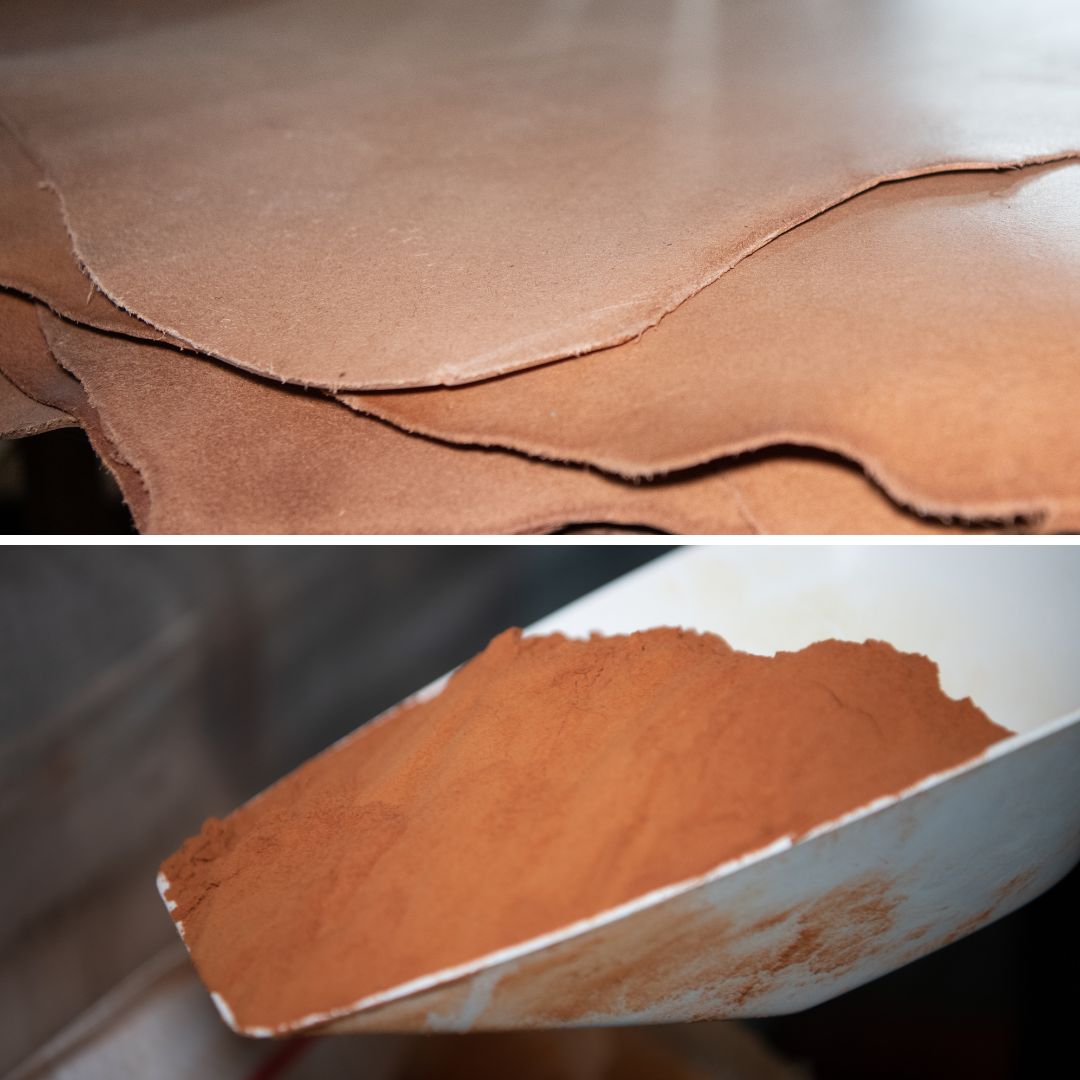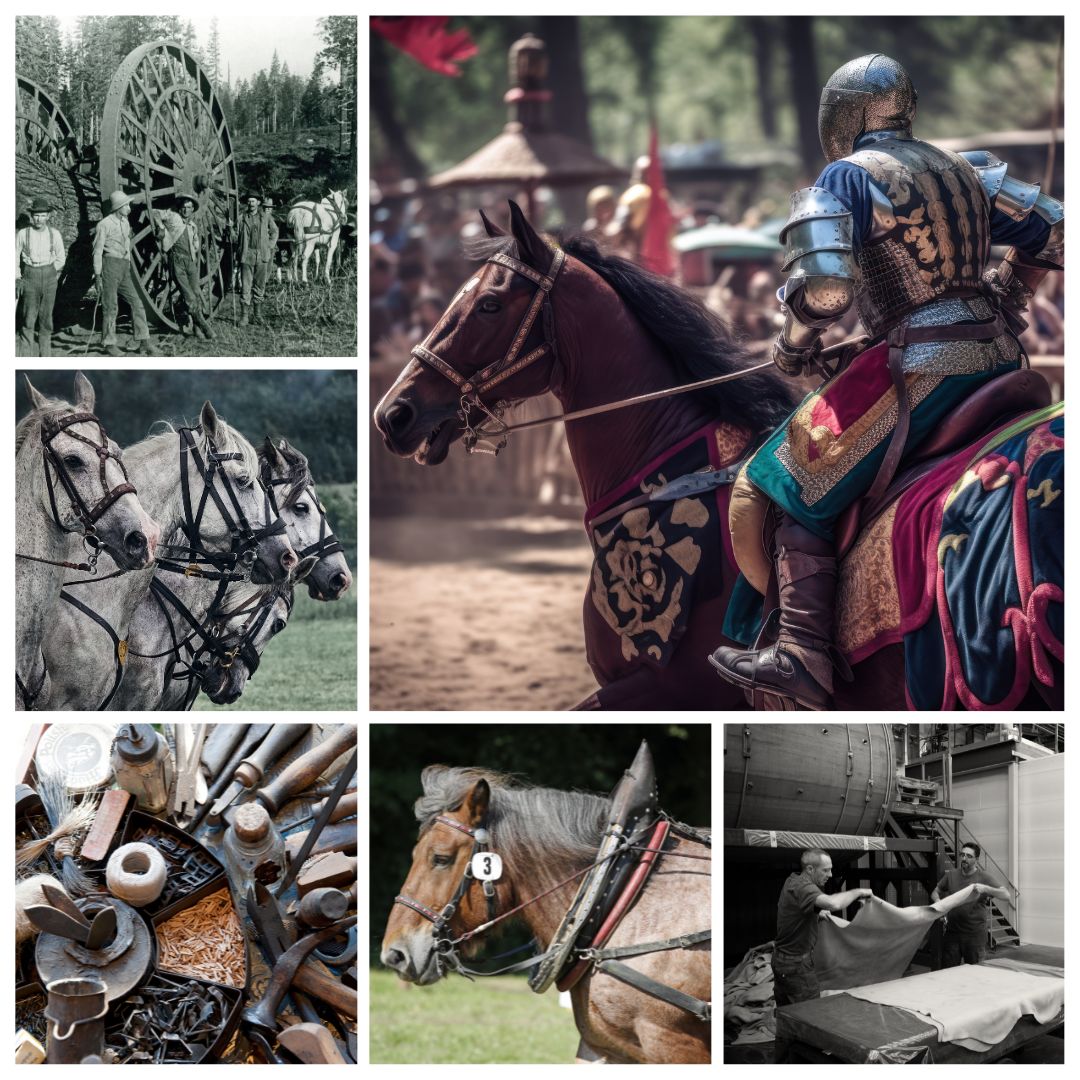Horseback riding is much more than just an activity; it's an art. The riding saddle is one of the most essential pieces of equipment, not only for the comfort of the rider but also for the well-being of the horse. Different riding saddles are designed to meet the specific needs of each equestrian discipline. We explain the main riding saddles in this blog post.
The dressage saddle
As the name suggests, the dressage saddle is designed for the equestrian discipline of dressage, which emphasizes the precision, elegance and subtlety of the movements performed by the horse.
Thanks to its long flaps and wide cleats, the dressage saddle is designed to promote a balanced position for the rider, with the legs positioned more upright, favoring an upright posture, and enabling subtle communication between rider and horse, promoting harmony and precision of movement. The dressage saddle generally features a deep seat to help the rider maintain a solid, balanced posture, promoting a harmonious connection with the horse during the execution of complex movements. The dressage saddle can be fitted with a classic cantle or a high cantle.
The design of the dressage saddle is very often very clean, emphasizing simplicity and functionality.
High-quality leathers are mainly selected for the manufacture of dressage saddles, thus offering durability, comfort and elegant aesthetics.
Photo: dressage saddle made by Epycuir
The CSO Saddle
The CSO saddle, also known as the show jumping saddle is a type of saddle specifically designed for the practice of equestrian show jumping.
The CSO saddle features a flat seat and a more flexible tree, allowing the rider to move freely and adapt quickly to the horse's movements when jumping. The front flaps are shorter to help the rider keep the legs in the correct position for jumping, avoiding any interference with the horse's movements during showjumping. The front and rear cleats of the CSO saddle are more pronounced to ensure good support for the rider during jumps.
In order to absorb shocks during show jumping, show jumping saddles can be padded and equipped with special shock absorbers, thus providing better comfort for rider and horse.
Show jumping saddles are typically made from lightweight yet durable materials, making them ideal for the fast and agile movements needed during show jumping competitions.
Photo: show jumping saddle made by La Rose des Cuirs
The Mixed Saddle
The mixed saddle is a versatile type of saddle designed to meet the needs of riders practicing multiple equestrian disciplines. This saddle combines the characteristics of the dressage saddle and show jumping saddle.
The mixed saddle stands out for its balanced design, providing a comfortable position for the rider and promoting good communication with the horse. It has a relatively flat seat and an intermediate tree that allows the rider to adopt a position closer to that of a dressage saddle while offering some freedom of movement for jumps.
Photo: unisex saddle made by Antélia, Artisan Sellier Harnacheur
The touring saddle
The touring saddle, also known as the trail saddle, is specially designed to provide optimal comfort and support during long hours of walking or horseback riding.
Thus, the seat of the touring saddle is padded providing additional comfort for the rider, allowing them to stay comfortable during long periods of riding.
The wider flaps provide extra support for the rider, allowing pressure to be distributed evenly over a larger surface area, reducing fatigue and discomfort during long rides. Trekking saddles are often fitted with rings and clips for attaching panniers or other equipment needed during the ride.
These saddles are typically designed to withstand the harsh conditions of outdoor hiking, providing increased durability for long-term use in varied environments.
In addition to rider comfort, the touring saddle is also designed to ensure horse comfort distributing pressure evenly across the horse's back and minimizing any potential discomfort during long hours of walking.
Photo: touring saddle by Epycuir
The Western Saddle

The western saddle is an iconic type of equipment, specifically designed to meet the needs of riders practicing western riding, a discipline that has its origins in cattle work and outdoor activities.
The western saddle is recognizable by its pommel and pronounced cantle, providing good support and extra safety to the rider during fast maneuvers, turns, and working with livestock. The deep, wide seat of the western saddle provides increased comfort for the rider, allowing them to spend long hours in the saddle while maintaining a stable and comfortable position. The western saddle features wide stirrups that help distribute weight evenly and provide extra stability.
The western saddle is robustly designed with very high-quality thick leathers to cope with the demands of outdoor work. Western saddles are often adorned with decorative patterns or elaborate engravings, reflecting the rich history and culture of Western riding.
The Medieval Saddle

Medieval saddles evolved over time, reflecting the needs of riders and the fighting styles of medieval times.
Medieval saddles were usually built with a sturdy structure to withstand the rigors of battle. They were often made of wood, reinforced with metal elements. As in the case of western saddles, medieval saddles often had a pommel and cantle to provide the rider with extra support when maneuvering or charging in battle. Medieval saddles often featured a high pommel strap, which provided increased stability and allowed the rider to maintain a solid stance even during sudden movements or loads. Some medieval saddles were richly decorated with intricate designs, engravings, and even metal inlays, reflecting the status and wealth of the rider.
For tournaments and jousts, medieval saddles were sometimes specially designed. They could have a deeper seat and additional protective elements for the rider. Medieval stirrups were often made of wood or metal, and they were often flat and wide to provide maximum support for the rider's foot.
The Amazon's Saddle

The amazon saddle, also known as the amazon saddle, is a type of equestrian saddle specifically designed for a particular riding called "amazon". Amazonian riding is a practice in which the rider rides a horse with both legs on the same side of the horse, often with the right leg folded over the side of the saddle and the left leg dangling.
The amazon saddle has an asymmetrical seat that allows the rider to sit comfortably while having one leg folded and the other dangling from the side of the saddle.
The amazon saddle is often equipped with a large front cleat that helps keep the rider's bent leg in place while riding.
Some models of amazon saddles have a higher backrest to provide extra support for the rider's back. The stirrups used with the amazon saddle are designed to accommodate the rider's bent leg. They are often shorter than the stirrups used with other types of saddles. The amazon saddle is positioned further back on the horse's back compared to a conventional saddle, to compensate for the weight of the rider's body tilted backwards.
The amazon saddle is often associated with elegant and traditional riding, reminiscent of times when women rode horses while wearing long clothes. Although less common nowadays, Amazonian horsemanship lives on in some traditional equestrian disciplines and is prized for its distinctive style.
The Camargue saddle

The Camargue saddle is a type of saddle specific to the Camargue, a region located in the south of France, known for its vast marshes, wildlife and unique equestrian culture. The Camargue saddle is traditionally associated with Camargue riding, a form of horsemanship practiced in this region, which emphasizes working with Camargue horses.
The Camargue saddle has a simple, streamlined shape, with a flat seat and relatively short flaps. A distinctive feature of the Camargue saddle is the lateral straps that hang from each side of the saddle. These straps are used to fasten saddlebags and other equipment while riding.
The Camargue saddle is generally light, making it suitable for long hours of hiking through the vast marshes of the Camargue. The stirrups of the Camargue saddle are often flat and wide, providing good support for the rider's foot.
Traditionally used for working with bulls and horses in the region, the Camargue saddle is designed to offer good balance to the rider while allowing great agility and responsiveness.
Camargue horsemanship is often associated with gardians, the guardians of herds of bulls in the Camargue. The Camargue saddle is used in this work, as well as in cultural events and bull runs. It represents an important part of the region's equestrian tradition and is appreciated for its functionality and connection to the unique Camargue way of life.
The Aerobatic Saddle

The aerobatic saddle is specially designed for the equestrian discipline called "equestrian vaulting". Vaulting is an equestrian sport that combines gymnastics and acrobatics performed on the back of a moving horse, often at a controlled walk or trot. The aerobatic saddle is adapted to allow vaulters to perform artistic and acrobatic movements in complete safety.
The aerobatic saddle is equipped with handles, straps, or D-grips that help the vaulter maintain balance and perform acrobatic movements. The seat of the aerobatic saddle is usually flat to allow the vaulter to move easily and perform tricks without restriction. The aerobatic saddle is often equipped with special rings to attach accessories such as straps, belts or additional handles used by the vaulter during his performance. The panels of the vaulting saddle are padded to provide comfort to the horse during the acrobatic movements of the vaulter.
The saddle is designed to ensure the safety of the vaulter by providing adequate support while minimizing the risk of injury while performing complex tricks. The size of the vaulting saddle is often adjusted according to the size of the vaulter and the horse to ensure a correct and secure fit.
Equestrian vaulting is practiced at various levels, ranging from basic levels for beginners to high-level international competitions. The aerobatic saddle is a key element in enabling vaulters to perform their routines successfully, with a focus on safety, comfort, and ease of movement.
Choosing the right riding saddle is essential for the comfort and safety of both rider and horse. By understanding the different types of saddles, the factors to consider when choosing, and fitting techniques, you will be able to ensure a pleasant and harmonious riding experience for you and your loyal equine companion. Always call in professional saddlers for personalized advice and adjustments.
If you are looking for a professional, do not hesitate to contact us, we can direct you to one of our saddle and harness customers who use our saddle leathers.









